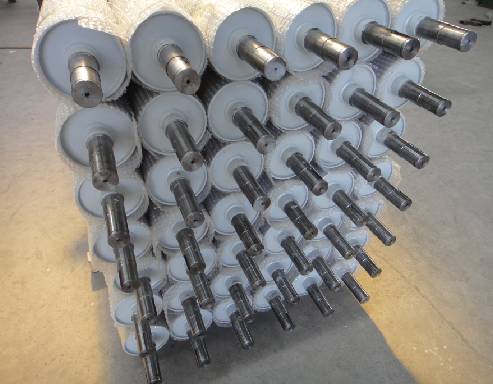 Afrikaans
Afrikaans  Albanian
Albanian  Amharic
Amharic  Arabic
Arabic  Armenian
Armenian  Azerbaijani
Azerbaijani  Basque
Basque  Belarusian
Belarusian  Bengali
Bengali  Bosnian
Bosnian  Bulgarian
Bulgarian  Catalan
Catalan  Cebuano
Cebuano  Corsican
Corsican  Croatian
Croatian  Czech
Czech  Danish
Danish  Dutch
Dutch  English
English  Esperanto
Esperanto  Estonian
Estonian  Finnish
Finnish  French
French  Frisian
Frisian  Galician
Galician  Georgian
Georgian  German
German  Greek
Greek  Gujarati
Gujarati  Haitian Creole
Haitian Creole  hausa
hausa  hawaiian
hawaiian  Hebrew
Hebrew  Hindi
Hindi  Miao
Miao  Hungarian
Hungarian  Icelandic
Icelandic  igbo
igbo  Indonesian
Indonesian  irish
irish  Italian
Italian  Japanese
Japanese  Javanese
Javanese  Kannada
Kannada  kazakh
kazakh  Khmer
Khmer  Rwandese
Rwandese  Korean
Korean  Kurdish
Kurdish  Kyrgyz
Kyrgyz  Lao
Lao  Latin
Latin  Latvian
Latvian  Lithuanian
Lithuanian  Luxembourgish
Luxembourgish  Macedonian
Macedonian  Malgashi
Malgashi  Malay
Malay  Malayalam
Malayalam  Maltese
Maltese  Maori
Maori  Marathi
Marathi  Mongolian
Mongolian  Myanmar
Myanmar  Nepali
Nepali  Norwegian
Norwegian  Norwegian
Norwegian  Occitan
Occitan  Pashto
Pashto  Persian
Persian  Polish
Polish  Portuguese
Portuguese  Punjabi
Punjabi  Romanian
Romanian  Russian
Russian  Samoan
Samoan  Scottish Gaelic
Scottish Gaelic  Serbian
Serbian  Sesotho
Sesotho  Shona
Shona  Sindhi
Sindhi  Sinhala
Sinhala  Slovak
Slovak  Slovenian
Slovenian  Somali
Somali  Spanish
Spanish  Sundanese
Sundanese  Swahili
Swahili  Swedish
Swedish  Tagalog
Tagalog  Tajik
Tajik  Tamil
Tamil  Tatar
Tatar  Telugu
Telugu  Thai
Thai  Turkish
Turkish  Turkmen
Turkmen  Ukrainian
Ukrainian  Urdu
Urdu  Uighur
Uighur  Uzbek
Uzbek  Vietnamese
Vietnamese  Welsh
Welsh  Bantu
Bantu  Yiddish
Yiddish  Yoruba
Yoruba  Zulu
Zulu Understanding the Mechanics and Applications of Snub Pulleys in Engineering Systems
Understanding the Snub Pulley A Critical Component in Mechanical Systems
In the realm of mechanical engineering and systems design, the snub pulley is an often-overlooked component with considerable significance. This specialized type of pulley plays a vital role in managing tension and redirecting the path of cables and belts in various machines and mechanical setups. Understanding the functionality and applications of snub pulleys can aid engineers and technicians in designing more efficient systems.
What is a Snub Pulley?
A snub pulley is typically used to change the direction of a cable or belt, thereby increasing the effectiveness of a mechanical system. Unlike standard pulleys that primarily support the movement of belts and cables, snub pulleys are strategically positioned to alter the angle at which the belt interacts with other components. This adjustment can be crucial for maintaining proper tension in the system, which, in turn, ensures optimal performance.
Functionality and Importance
The primary function of a snub pulley is to increase the wrap angle of a belt or cable, which can enhance the friction between the pulley and the belt. Increased friction allows for better grip, resulting in improved force transmission. This is particularly important in systems where high torque is required, such as conveyor belts, cranes, and various forms of machinery used in manufacturing and construction.
Moreover, snub pulleys can help mitigate issues such as slipping or misalignment in the belt system. By redirecting the path of the belt, these pulleys contribute to a more stable and reliable operation, which is essential in high-stress environments.
Applications of Snub Pulleys
snub pulley

Snub pulleys find their applications in a plethora of industries, encompassing everything from automotive to aerospace and heavy machinery to textiles. For instance, in the automotive industry, snub pulleys are often employed in engine belt systems to optimize tension and facilitate smooth operation. In conveyor systems, they help manage the belt’s path as it navigates through various structural elements, ensuring that materials are efficiently transported without slippage.
Furthermore, snub pulleys are also utilized in mining and construction equipment, where heavy loads require robust and fail-safe mechanisms to ensure safe operation. They are integral in lifting applications, where maintaining precise tension is critical for load stability and safety.
Design Considerations
When designing a system that incorporates snub pulleys, several factors must be taken into account. The material of the pulley is crucial; it must withstand the forces and environmental conditions it will face. Common materials include steel, aluminum, and high-strength plastics, each selected based on specific workload and environmental conditions.
Additionally, the size and position of the snub pulley must be engineered to optimize the angle of wrap and the effective transmission of force. Engineers often perform calculations to determine the most efficient placement and dimensions, taking into consideration the overall layout of the mechanical system.
Conclusion
In summary, while snub pulleys may not be the most glamorous components in the field of mechanical engineering, their role is undeniably critical. By enhancing the efficiency of belt systems, managing tension, and ensuring reliable operation across various applications, snub pulleys serve as unsung heroes in the machinery landscape. As industries evolve and technology advances, the importance of understanding and optimizing such components will only increase, underscoring the need for continual innovation in design and application.
-
Revolutionizing Conveyor Reliability with Advanced Rubber Lagging PulleysNewsJul.22,2025
-
Powering Precision and Durability with Expert Manufacturers of Conveyor ComponentsNewsJul.22,2025
-
Optimizing Conveyor Systems with Advanced Conveyor AccessoriesNewsJul.22,2025
-
Maximize Conveyor Efficiency with Quality Conveyor Idler PulleysNewsJul.22,2025
-
Future-Proof Your Conveyor System with High-Performance Polyurethane RollerNewsJul.22,2025
-
Driving Efficiency Forward with Quality Idlers and RollersNewsJul.22,2025





























